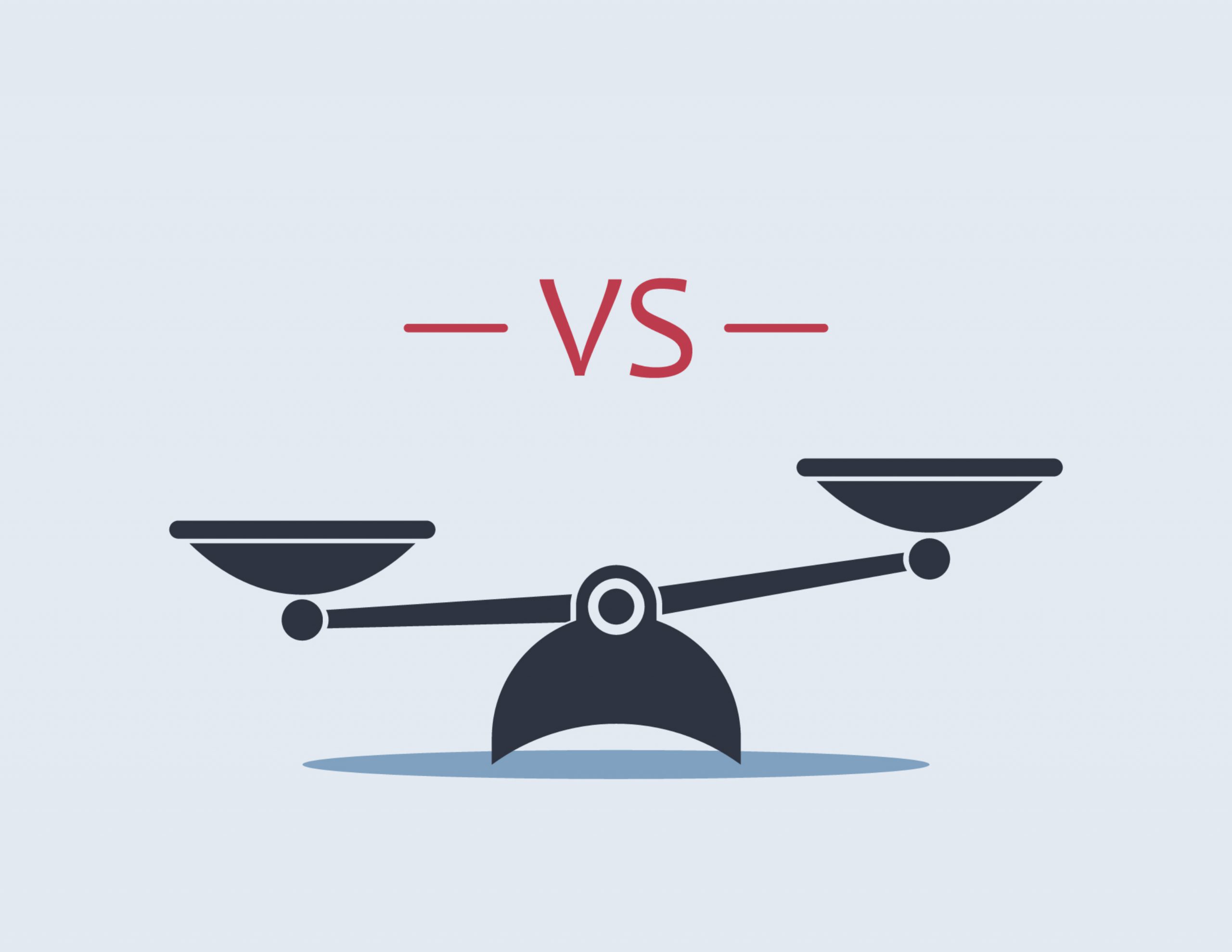
The pandemic significantly diminished the demand for ride-hailing and ridesharing, affecting companies operating in this space. However, the growth of e-commerce and delivery services partly benefitted ride-hailing companies offering delivery services.
Despite the macroeconomic concerns, ride-hailing companies have witnessed rising demand over the past year due to people’s return to pre-pandemic lifestyles. In this piece, I evaluated shares of two ride-hailing majors, Uber Technologies, Inc. (UBER) and Lyft, Inc. (LYFT), to determine which has better upside potential.
Mobility is making a strong comeback on the back of pent-up travel demand and the return to offices. The consumer spending data of May 2023 revealed that U.S. rideshare sales at UBER increased 6% year-over-year. On the other hand, LYFT’s sales declined 6% over the prior-year quarter.
UBER’s sales surpassed the pre-pandemic levels by March 2022. However, sales at LYFT are yet to surpass the pre-pandemic levels.
UBER and LYFT surpassed the consensus EPS and revenue estimates in the first quarter. UBER’s EPS was $0.01 above the consensus estimate, while its revenue topped analysts' forecasts by 1.4%. Similarly, LYFT’s EPS was $0.15 above analyst estimates, while its revenue surpassed the consensus estimate by 1.9%.
UBER’s CEO Dara Khosrowshahi, said, “We significantly accelerated Q1 trip growth to 24% from 19% last quarter. Looking ahead, we are focused on extending our product, scale, and platform advantages to sustain market-leading top and bottom-line growth beyond 2023.” “We delivered record profitability and free cash flow in Q1, and we are poised to expand profitability again in Q2,” said CFO Nelson Chai.
“We continued to actively manage our balance sheet, exiting our equity position in Yandex. Taxi and refinancing our term loans, and remain focused on disciplined capital allocation over the coming years,” he added.
LYFT’s CFO Elaine Paul said, “Our Q1 performance was better than we anticipated as rideshare ride growth accelerated year-over-year for the first time in nearly two years. In Q2, we will continue focusing on delivering service levels that riders and drivers expect. We’ve moved decisively to cut our operating costs and will use the savings to pay for continued service level improvements near-term.”
UBER expects gross bookings in the second quarter to come between $33 billion and $34 billion, while its adjusted EBITDA is expected to come between $800 million and $850 million. For the second quarter, LYFT expects its revenue to come between $1 billion and $1.02 billion. Also, its adjusted EBITDA is forecasted to be between $20 million and $30 million, with an adjusted EBITDA margin of between 2% and 3%.
When it comes to price performance, UBER is the clear winner. UBER stock has delivered positive returns in all time frames. In addition, UBER’s stock has gained 101.9% over the past year, compared to LYFT’s 24.8% decline.
Let’s dive deeper to find out which one of these stocks is a better investment:
Recent Financial Results
UBER’s revenue for the first quarter ended March 31, 2023, increased 29% year-over-year to $8.82 billion. Its loss from operations narrowed 45.6% over the prior-year quarter to $262 million. The company’s adjusted EBITDA increased 353% year-over-year to $761 million.
In addition, its net loss attributable to UBER narrowed 97.4% year-over-year to $157 million. Also, its net cash provided by operating activities increased significantly year-over-year to $606 million. Its loss per share narrowed 97.4% year-over-year to 0.08.
For the fiscal first quarter ended March 31, 2023, LYFT’s revenue increased 14.3% year-over-year to $1 billion. Its adjusted net income rose 12.6% year-over-year to $27.70 million. The company’s adjusted EBITDA declined 58.6% year-over-year to $22.70 million.
Its total cash, cash equivalents, and restricted cash and cash equivalents increased 161.6% year-over-year to $739.43 million. In addition, its loss from operations widened 8.7% year-over-year to $216.76 million.
Expected Financial Performance
Analysts expect UBER’s EPS for fiscal 2023 to be positive. Its EPS for fiscal 2024 is expected to increase significantly year-over-year to $0.92. Its fiscal 2023 and 2024 revenue is expected to increase 17.9% and 17% year-over-year to $37.58 billion and $43.94 billion. Its EPS for the quarter ended June 30, 2023, is expected to remain negative. Its revenue for the same quarter is expected to increase 15.8% year-over-year to $9.35 billion.
For fiscal 2024, LYFT’s EPS is expected to increase 146% year-over-year to $0.47. Its fiscal 2023 and 2024 revenue is expected to increase 4.9% and 12% year-over-year to $4.30 billion and $4.81 billion. Its revenue for the quarter ended June 30, 2023, is expected to increase 3.1% year-over-year to $1.02 billion. Its EPS for the same quarter is expected to remain negative.
Profitability
UBER’s trailing-12-month revenue is eight times what LYFT generates. UBER’s gross profit margin and asset turnover ratio of 30.95% and 1.04x are higher than LYFT’s 30.02% and 0.91x, respectively. On the other hand, LYFT’s levered FCF margin of 9.91% is 344.4% higher than UBER’s 2.23%.
Valuation
In terms of forward EV/EBITDA, LYFT is currently trading at 18.40x, 30.2% lower than UBER’s 26.36x. LYFT’s forward EV/Sales ratio of 0.73x is 70.6% lower than UBER’s 2.48x. Likewise, LYFT’s trailing-12-month Price/Sales of 0.87x compares to UBER’s 2.53x.
Thus, LYFT is relatively more affordable.
POWR Ratings
UBER and LYFT have an overall rating of C, equating to a Neutral in our proprietary POWR Ratings system. The POWR Ratings are calculated considering 118 different factors, with each factor weighted to an optimal degree.
Our proprietary rating system also evaluates each stock based on eight distinct categories. UBER and LYFT have a C grade for Sentiment, in sync with their mixed analyst estimates.
UBER has a D grade for Value, consistent with its stretched valuation. On the other hand, LYFT’s mixed valuation justifies its C grade for Value.
Of the 82 stocks in the Technology – Services industry, UBER is ranked #35, while LYFT is ranked #56 in the same industry.
Beyond what we’ve stated above, we have also rated both stocks for Growth, Momentum, Stability, and Quality. Click here to view UBER ratings. Get all the ratings of LYFT here.
The Winner
Competition in the ride-hailing market is heating up as UBER and LYFT vie for market share.
While UBER diversified its business from ride-hailing and ridesharing to food, grocery, and alcohol delivery, LYFT has failed to recover from the pandemic-led damage. LYFT has undertaken job cuts recently to reduce costs and improve profitability. UBER will likely benefit from its global presence and the rise in delivery revenues.
Both companies will benefit from the rise in travel demand and the reopening of offices. However, considering their current fundamentals, waiting for a better entry point in both stocks could be wise.
Our research shows that the odds of success increase when one invests in stocks with an Overall Rating of Strong Buy or Buy. View all the top-rated stocks in the Technology - Services industry here.
What To Do Next?
Discover 10 widely held stocks that our proprietary model shows have tremendous downside potential. Please make sure none of these “death trap” stocks are lurking in your portfolio:
UBER shares were trading at $43.26 per share on Wednesday morning, up $0.17 (+0.39%). Year-to-date, UBER has gained 74.93%, versus a 16.55% rise in the benchmark S&P 500 index during the same period.
About the Author: Dipanjan Banchur

Since he was in grade school, Dipanjan was interested in the stock market. This led to him obtaining a master’s degree in Finance and Accounting. Currently, as an investment analyst and financial journalist, Dipanjan has a strong interest in reading and analyzing emerging trends in financial markets.
Uber (UBER) vs. Lyft (LYFT): Which Ride-Hailing Giant Is the Better Investment Now? StockNews.com






